What will money look like in future?

Will we continue to use designed, material objects such as coins, banknotes, credit cards and even mobile phones, in order to trade? If not, what might replace these physical tokens at the point of exchange, or become an alternative to these tangible representations of value? What about the increasing impact of digital technology, and crypto-currencies like Bitcoin?
How and what will we value, and see on display at the V&A, in years to come?
These are just some of the many speculative questions that I’m currently exploring in my practice-based research project, called Money No Object. I’m very excited to have the chance to work as a Visiting Artist, with the V&A Digital Programmes and Research departments, to consider these themes of money and value, in the context of this stunning and most inspiring museum.
One particularly pressing question, often raised in a recessive and recovering economy, focuses on how it is possible to capture and articulate cultural value, and how to evaluate the important role provided by museums and galleries, which are free to access, but of course not to maintain. Policy-makers and funders rely on quantifiable evidence to prove the case for the arts, and yet the enjoyment and experience of a museum visit cannot be measured effectively by a spreadsheet of figures. My own funding support for this project comes, in part, from Creativeworks London, an organization brokering knowledge exchange, research and development partnerships between creative businesses and academic institutions (including the V&A). Creativeworks offer themed grants that reflect relevant issues, and in this case, the theme is ‘Demonstrating Value’.
So the challenge has been set, for my own practice and for the context in which I am working within the museum. How can we demonstrate the value that we may perceive and appreciate as visitors, during a trip to the V&A, and how can the museum gauge and assess our enjoyment? Certainly, monetary contributions to the donation boxes are one obvious response, moved as the visitor might feel by the value of the experience that is otherwise free of charge, and which the museum can count in pounds and pence per head. But while this statistical assessment perpetuates the same limitations that cultural organisations are seeking to overcome, I decided it was still perhaps a good place to start, or at least for an artist to begin experimenting…
So far, I have created two different artist interventions involving the large glass donation cases, sited in the Tunnel and Grand Entrance of the V&A. These interventions are attempting to discover whether artistic practice and design can increase charitable giving to the museum. If the cases are made more visible by the artwork, will people contribute more?
The first intervention, called The Eyes Have It, uses imagery of the Queen’s eyes taken from the £5 and £20 banknotes (with kind permission from the Bank of England):
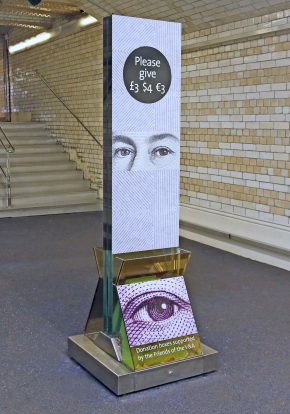
According to psychology research, people become more co-operative when they sense they are being observed, and are more likely to conform to social rules when they feel they are being watched. The Eyes Have It is an experiment to see if this theory has a positive effect on the request for donations to the museum.
The second intervention, called Hey Big (Red) Spender! similarly applies pattern and designs from British money, this time using the £50 banknote:
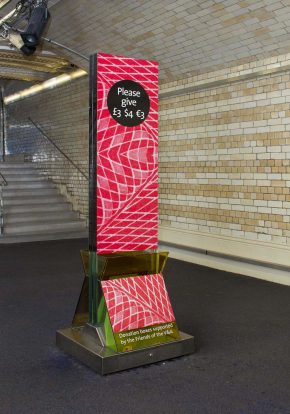
Research suggests that the colour red has a physiological effect on the human body, increasing our heart rate and raising testosterone levels in men. These effects can make us spend more money. Hey Big (Red) Spender! will try to determine the success of this concept when applied to museum donation cases.
The third and final intervention, called Growing Donations, will be on show during the V&A Digital Design Weekend on 20th and 21st September 2014, and will explore the idea that the presence of flowers inclines people to be more generous.
Beyond the traditional methods of making a museum donation, Money No Object is also seeking to provide visitors with some playful alternatives during the Digital Design Weekend, using design interaction and digital innovation. The aim is to introduce an entertaining and more socially interactive process for considering and exchanging value within an arts and cultural organisation. The Money No Object donations system will explore the use of wearable technology and human contact through social gestures (such as a handshake or a hug), offering visitors the chance to make a financial contribution to the V&A. At the same time, the novel process of donating will aim to re-engage audiences with the broader value of the museum, build connections between people, and strengthen social cohesion within the museum’s visitor community.
Here are some examples of the wearable prototypes currently in development:

The Handshake Agreement and the High-Five gloves can transfer a pound donation at the point of contact, creating ‘contact-full’ people-centred payments.
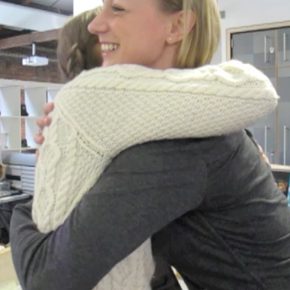
Money is a bond, a tacit agreement of trust, a social exchange. What if hugs were an option as a method of transferring something more meaningful than just a financial sum? Hug & Pay badges transact a donation on badge-to-badge contact during a friendly embrace.

Tap & Pay is a performance-based donations system, that uses a tap dance to choreograph monetary offerings.
Over the next month, I’ll continue to develop these initial prototypes and work towards the Money No Object project launch at the Digital Design Weekend. This free two day event across the V&A, will be a fun chance for visitors to come along and try out the concept by giving us a hug, high-five, or by shaking hands. There will also be an opportunity to watch Tap & Pay dancing donations in action.
Hope to see you there!
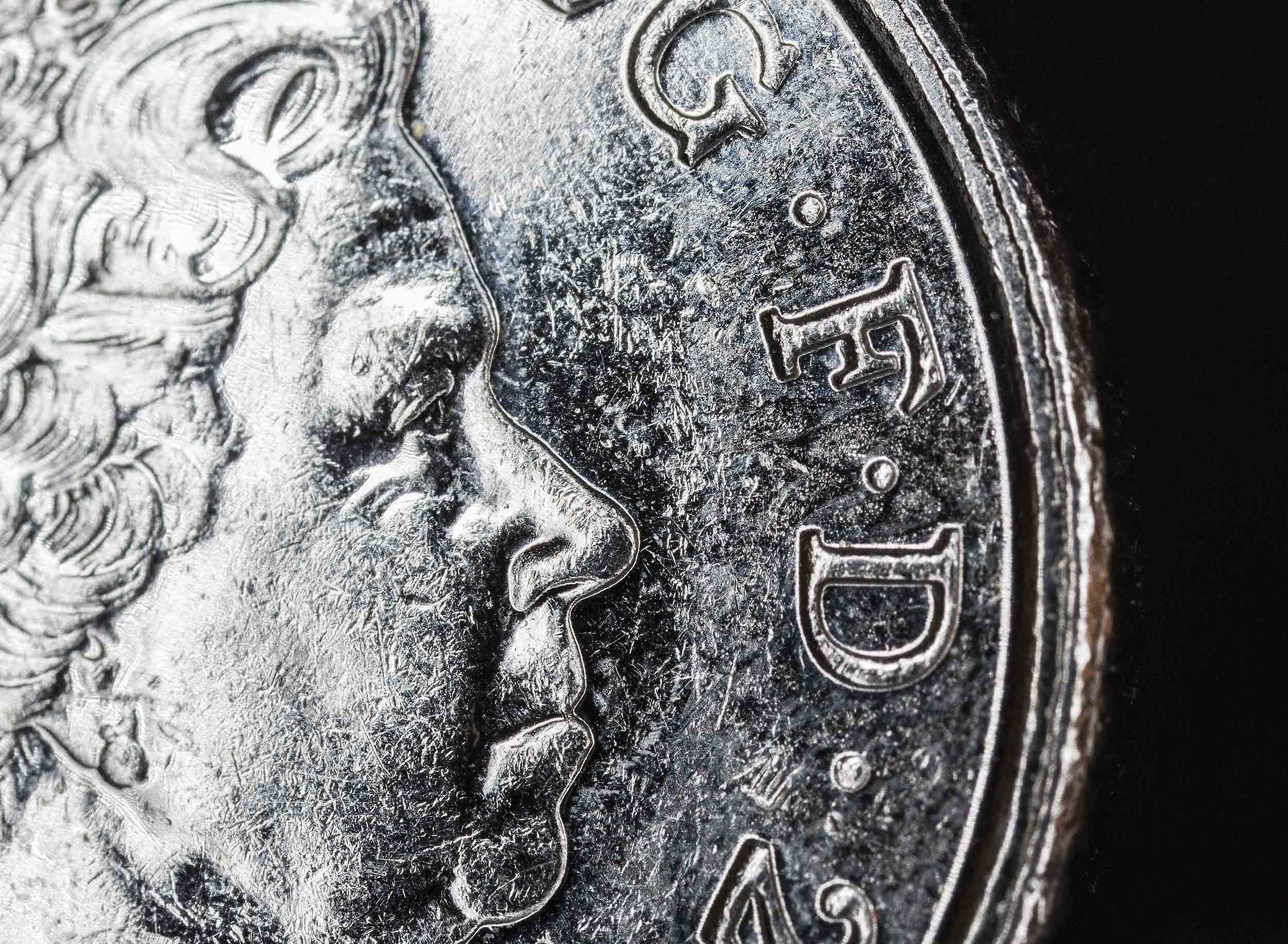
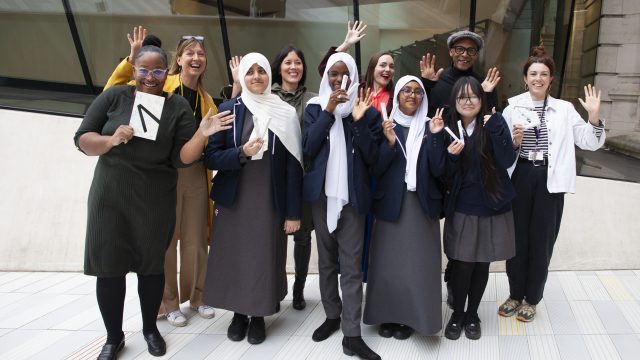
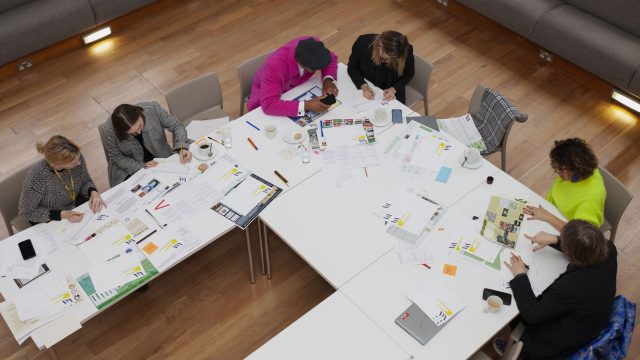
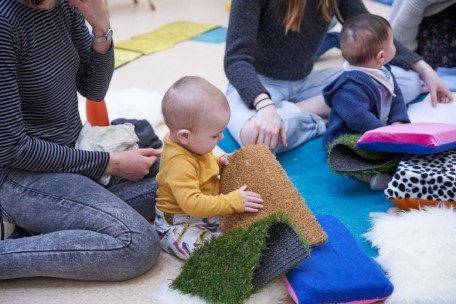
Brilliant ideas for transfer of money through human contact. Nice work